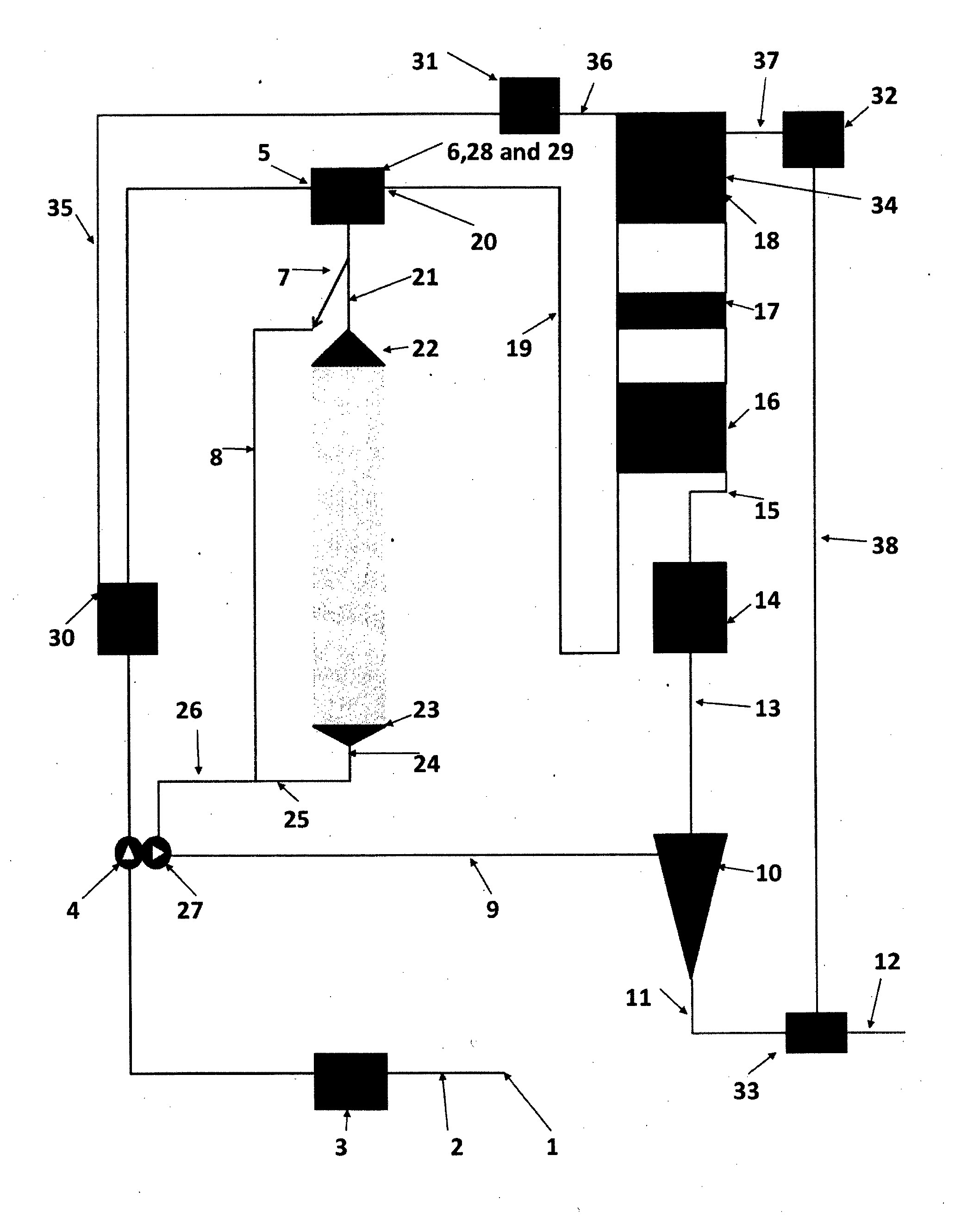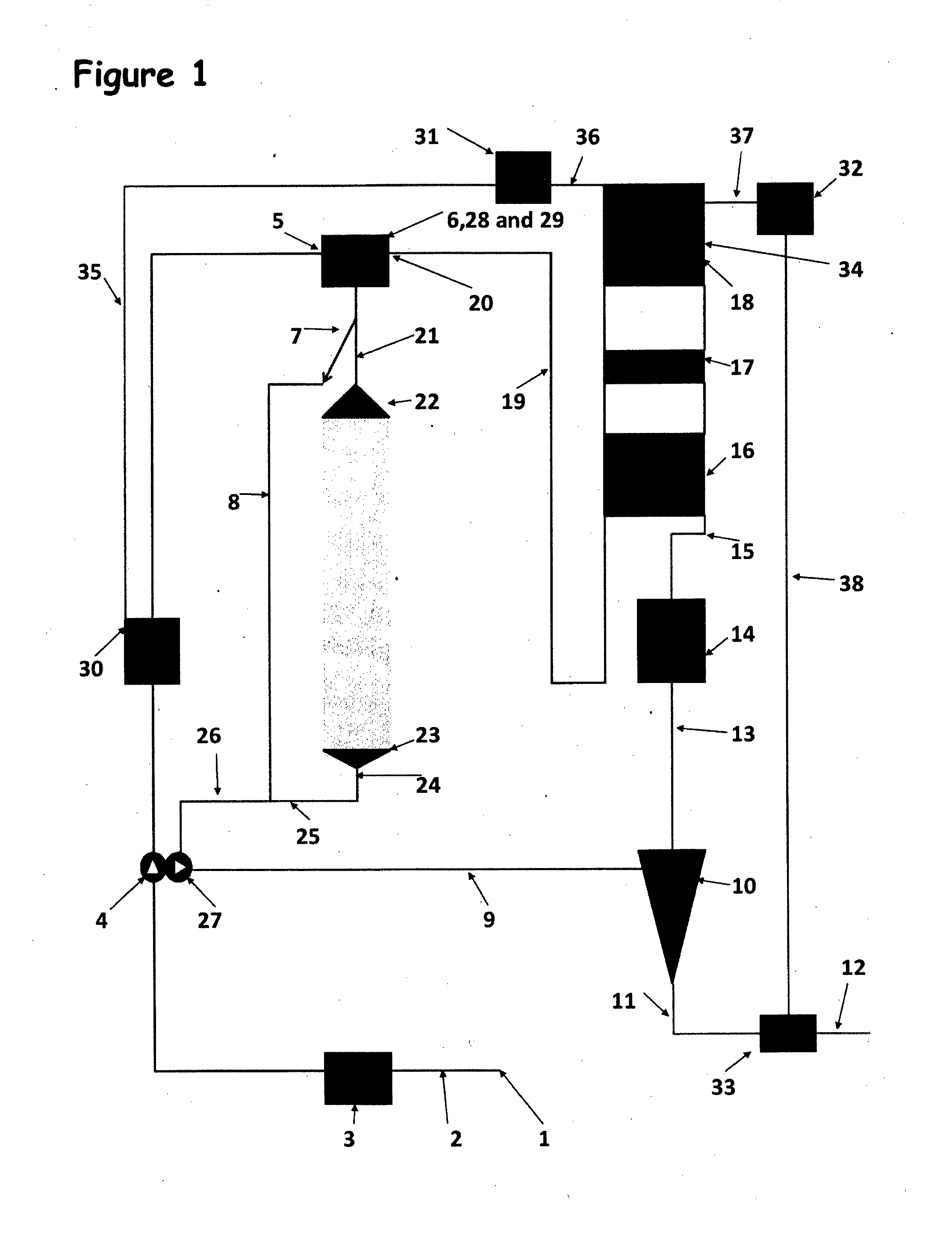Recirculating Shower System
a shower system and circulating technology, applied in the field of circulating shower systems, can solve the problems of limiting the power available to heat up the water as it passes through the shower heater, requiring more complicated plumbing than electric showers, and unusable electric showers, etc., and achieve the effect of reducing energy requirements
- Summary
- Abstract
- Description
- Claims
- Application Information
AI Technical Summary
Benefits of technology
Problems solved by technology
Method used
Image
Examples
Embodiment Construction
[0029]A detailed, non-limiting example of the use of the invention in a recirculating shower system, such as that described in WO2006 / 131743 is provided.
[0030]Referring to FIG. 1, in a shower system of the invention, the mains water (1) is introduced to the system via a water pipe (2) passing through a hydraulic jump (3), which prevents water passing back from the system into the mains water, and is pumped by a pump (4) through the cold water inlet (5) of a shower mixer (6). The mixer adjusts the relative cold and hot flows until the mixed flow is at the required temperature for the shower. This will be discussed in more detail below.
[0031]The mixed water passes from the mixer to a bypass valve (7) which can direct the shower water to either:[0032]The showerhead (22) via a pipe or hose (21), or[0033]To a bypass circuit (8).
[0034]When the shower is turned on the bypass valve is set automatically to direct the water to the bypass circuit (8), diverting water away from the showerhead (...
PUM
 Login to View More
Login to View More Abstract
Description
Claims
Application Information
 Login to View More
Login to View More - R&D
- Intellectual Property
- Life Sciences
- Materials
- Tech Scout
- Unparalleled Data Quality
- Higher Quality Content
- 60% Fewer Hallucinations
Browse by: Latest US Patents, China's latest patents, Technical Efficacy Thesaurus, Application Domain, Technology Topic, Popular Technical Reports.
© 2025 PatSnap. All rights reserved.Legal|Privacy policy|Modern Slavery Act Transparency Statement|Sitemap|About US| Contact US: help@patsnap.com


